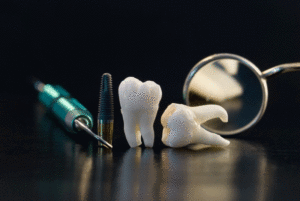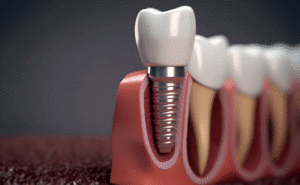Your smile is often the first thing people notice about you. That’s why there’s such a huge market for straightening and whitening teeth. You want people to be dazzled when they see that beautiful smile. Unfortunately, some of us are born with minor gaps in our teeth. They aren’t harmful, but they can be embarrassing, inconvenient, and lead to self-esteem issues. If you’re looking for a cosmetic fix for a tooth gap, here’s what you need to know.
Understanding Diastema
Dental gaps, also known as diastema, refers to the extra space that can form between two teeth. Diastema is common in children as their permanent teeth come in, but sometimes these gaps persist into adulthood. Although the gaps themselves typically aren’t harmful and they don’t impact dental function in any way, they can be embarrassing. If your tooth gaps developed as an adult, they could also point to some underlying issues that are a threat to your oral health.
What Causes Dental Gaps?
There are a number of things that can cause diastema including:
- Discrepancies in tooth size
- An oversized labial frenum
- Oral alignment issues
- Gum disease
Let’s take a look at a few of these issues in-depth and go over how they can cause dental gaps.
Issues With the Jaw and Mouth
Diastema is most commonly the result of issues with the jaw and the mouth. For example, having a large jaw with relatively small teeth causes gaps to form as the teeth spread out to fit the jaw.
Another common cause is having a large labial frenum. The labial frenum is the soft tissue that attaches your upper lip to the upper gums. If it’s too large, it can exert a pressure that pulls your teeth apart.
Tongue thrust is the most common non-genetic cause of diastema. With tongue thrust, instead of resting against the roof of your mouth, the tongue pushes up against the front of your teeth forcing them apart over time.
Gum Disease
If you’ve only recently developed gaps in your teeth, then it may be the result of gum disease. Gum disease weakens the gums and tissue supporting your teeth, eventually causing them to loosen and pull apart.
How is Diastema Corrected?
Fortunately, there are a number of cosmetic procedures that can correct diastema including dental bonding, veneers, and crowns. Let’s go over each option.
Dental Bonding to Fix Gaps
Dental bonding is a cosmetic treatment that uses tooth-colored resin to hide the gap between teeth. The main benefit of dental bonding is that it can be done in a single visit. The downside is that this treatment won’t work for everyone. If the gap is too large or you have multiple gaps along with other issues like crooked crowded teeth, then dental bonding won’t do much for you.
Using Veneers for a Tooth Gap
Veneers are custom shells made out of tooth-colored material that fit over the front of your actual teeth. Getting veneers is a more expensive and involved process than dental bonding, but the results are often worth it if you have a larger gap or other issues with the teeth.
When to Choose Crowns for Your Dental Gaps
Crowns are similar to veneers, but they cover the entire tooth instead of just the front. You would only want to go with crowns if you have some serious, fundamental issues with your teeth beyond the gaps. If they are also broken or cracked, for example.
Do you have gaps in your teeth that you would like to address? Dr Caven can help. Contact us today to set up an appointment.



